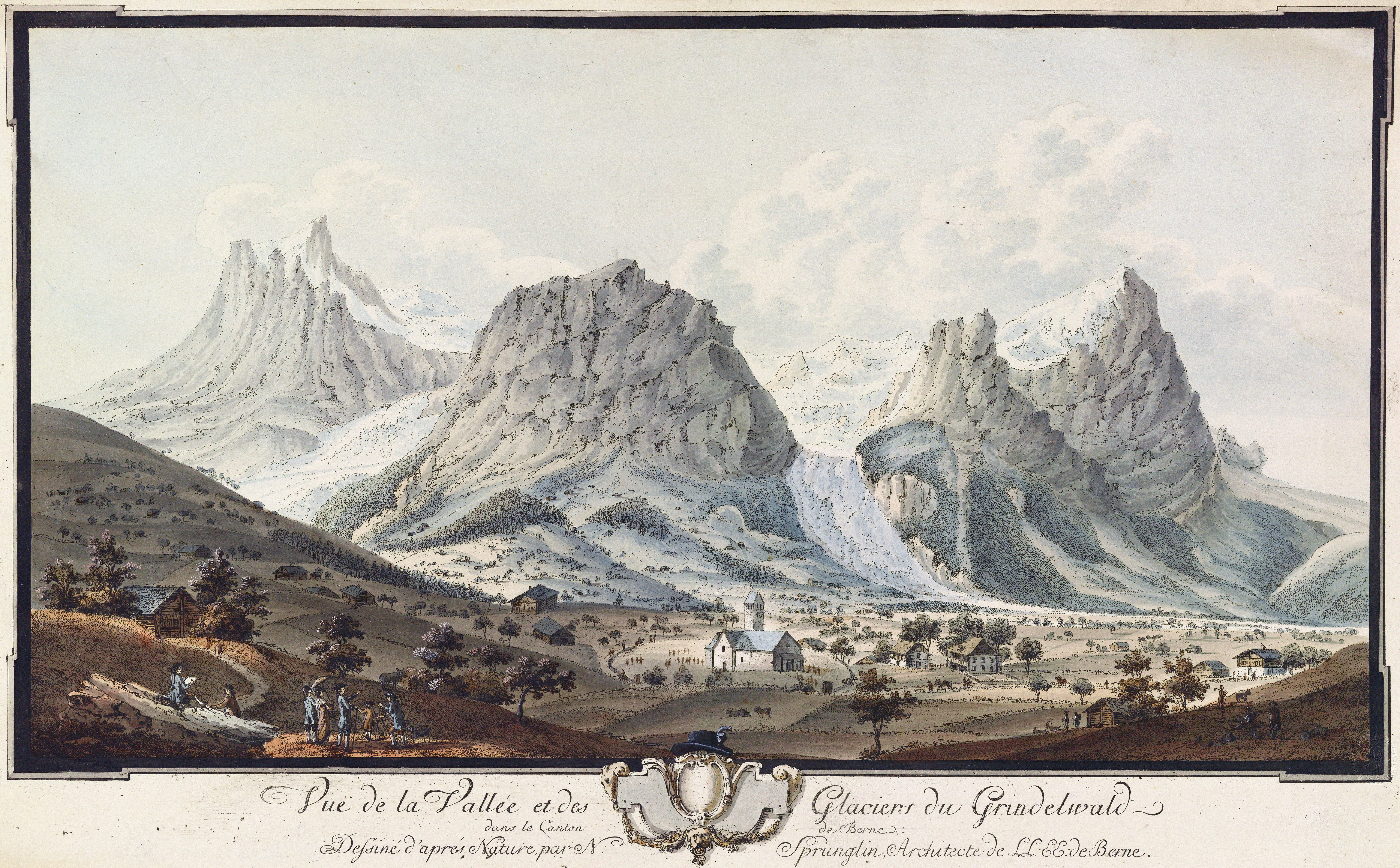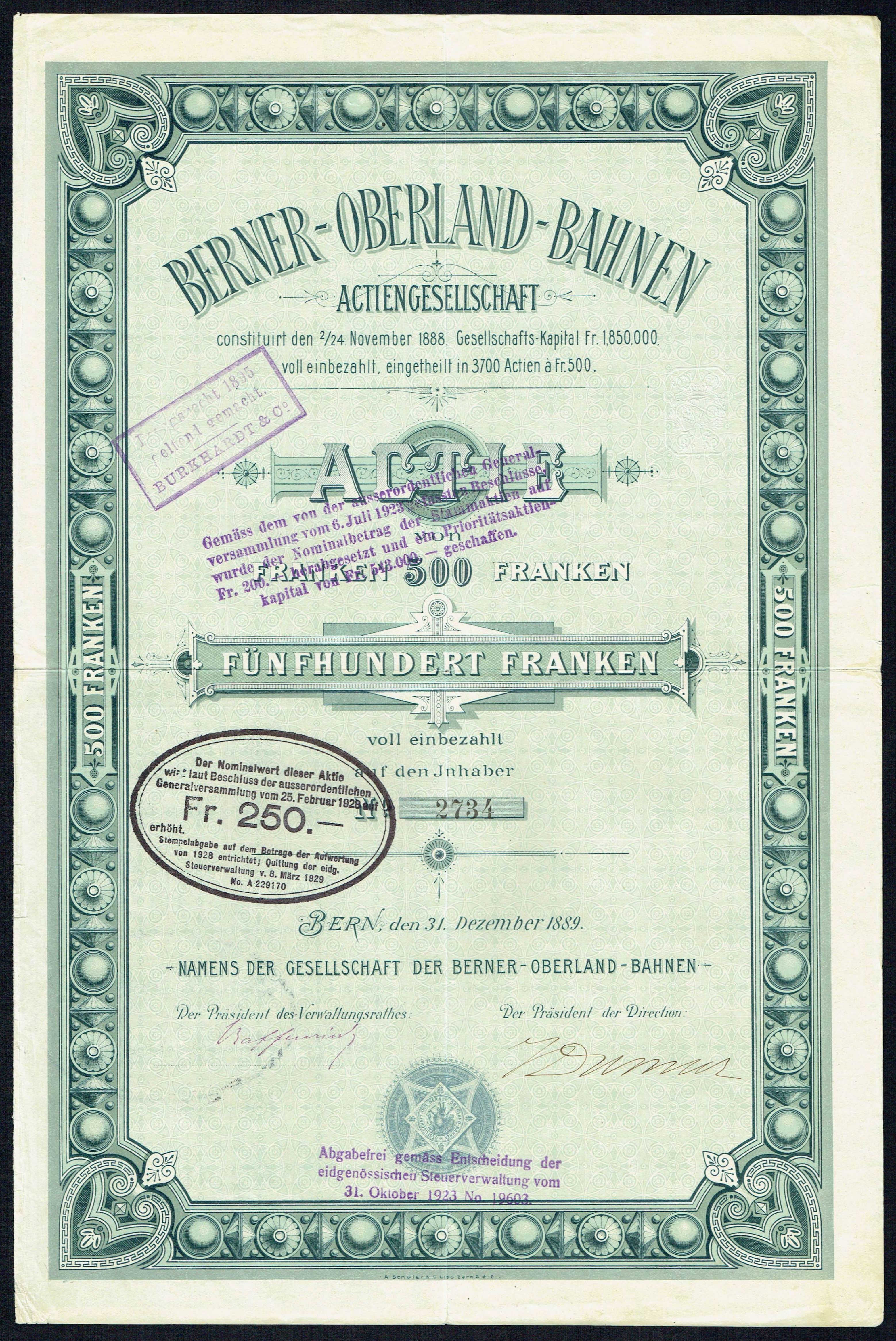|
Zweilütschinen Railway Station
Zweilütschinen railway station (german: Bahnhof Zweilütschinen) is a railway station in the municipality of Gündlischwand in the Swiss canton of Bern. The station is on the Berner Oberland Bahn, whose trains operate services to Interlaken Ost, Grindelwald and Lauterbrunnen. It takes its name from the hamlet of Zweilütschinen, which itself is named after the nearby confluence of the White and the Black branches of the Lütschine river The Lütschine is a river in the Bernese Oberland region of Switzerland. The Lütschine proper runs from Zweilütschinen, where its two tribututaries join, to Lake Brienz at Bönigen. The Schwarze Lütschine, or Black Lütschine, flows from Grinde .... The depot and workshops of the Berner Oberland Bahn are located beside the station. The railway's two branches, to Grindelwald and Lauterbrunnen, diverge to the south of the station, following the valleys of the Black and White Lütschine rivers respectively. 17 March 2014 marked the 100 ... [...More Info...] [...Related Items...] OR: [Wikipedia] [Google] [Baidu] |
Gündlischwand
Gündlischwand is a village and municipality in the Interlaken-Oberhasli administrative district in the canton of Bern in Switzerland. Besides the village of Gündlischwand, the municipality also includes the hamlet of Zweilütschinen. History Gündlischwand is first mentioned in 1331 as ''Gundlisswant''. During the Middle Ages parts of the Lütschine valley were owned by a variety of local nobles. By 1331, Interlaken Abbey acquired the land and rights to the village of Gündlischwand. It remained under the Abbey's control until 1528 when Bern adopted the new faith of the Protestant Reformation and secularized the Abbey and all its land. The modern municipality also includes the village of Zweilütschinen at the confluence of the White and Black Lütschine rivers. In 1580 a bridge was built over the rivers at Zweilütschinen, allowing more local trade to flow through the village. In the late 16th century rich ore deposits were discovered in the Lauterbrunnen valley. After ... [...More Info...] [...Related Items...] OR: [Wikipedia] [Google] [Baidu] |
Grindelwald
Grindelwald is a village and Municipalities of Switzerland, municipality in the Interlaken-Oberhasli (administrative district), Interlaken-Oberhasli administrative district in the Cantons of Switzerland, canton of Bern (canton), Berne. In addition to the village of Grindelwald, the municipality also includes the settlements of Alpiglen, Burglauenen, Grund, Itramen, Mühlebach, Schwendi, Tschingelberg and Wargistal. Grindelwald village is located at AMSL, above sea level. Mentioned for the first time in 1146, it has become a major tourist destination of both Switzerland and the Alps since the golden age of alpinism in the 19th century. It is notably overlooked by the section of the Bernese Alps from the Wetterhorn to the Eiger, making up a huge natural barrier. Together with the adjacent valley of Lauterbrunnen, the valley of Grindelwald forms part of the Jungfrau Region of the Bernese Oberland, between Interlaken and the main crest of the Bernese Alps. Similarly to Lauterbrunnen, ... [...More Info...] [...Related Items...] OR: [Wikipedia] [Google] [Baidu] |
Railway Stations In The Canton Of Bern
Rail transport (also known as train transport) is a means of transport that transfers passengers and goods on wheeled vehicles running on rails, which are incorporated in Track (rail transport), tracks. In contrast to road transport, where the vehicles run on a prepared flat surface, rail vehicles (rolling stock) are directionally guided by the tracks on which they run. Tracks usually consist of steel rails, installed on Railroad tie, sleepers (ties) set in track ballast, ballast, on which the rolling stock, usually fitted with metal wheels, moves. Other variations are also possible, such as "slab track", in which the rails are fastened to a concrete foundation resting on a prepared subsurface. Rolling stock in a rail transport system generally encounters lower friction, frictional resistance than rubber-tyred road vehicles, so passenger and freight cars (carriages and wagons) can be coupled into longer trains. The rail transport operations, operation is carried out by a ... [...More Info...] [...Related Items...] OR: [Wikipedia] [Google] [Baidu] |
Grindelwald Railway Station
Grindelwald railway station (german: Bahnhof Grindelwald) is a railway station in the village and municipality of Grindelwald in the Swiss canton of Bern. The station is the terminus of both the Berner Oberland Bahn (BOB), whose trains operate services to Interlaken Ost, and of the Wengernalpbahn (WAB), whose trains operate to Kleine Scheidegg via Grindelwald Grund. The BOB and WAB lines use different gauges, and there is no physical connection between them. However the trains operate from adjacent platforms within the same station. Trains of both lines enter the station from its western end. Counter-intuitively, the WAB commences its ascent to Kleine Scheidegg by descending steeply to Grindelwald Grund, where it reverses and commences its climb. Services the following rail services stop at Grindelwald: * Regio: ** half-hourly service to . ** hourly to half-hourly service to . Post bus services connect Grindelwald station to other local places, including a service to Meiri ... [...More Info...] [...Related Items...] OR: [Wikipedia] [Google] [Baidu] |
Lauterbrunnen Railway Station
Lauterbrunnen is a railway station in the village and municipality of Lauterbrunnen in the Swiss canton of Bern. The station is on the Berner Oberland Bahn (BOB), whose trains operate services to Interlaken Ost. It is also the valley terminus of the Wengernalpbahn (WAB), whose trains operate to Kleine Scheidegg via Wengen, and of the Bergbahn Lauterbrunnen-Mürren (BLM), whose hybrid cable car and rail link runs to Mürren. The BOB and WAB lines use different gauges, and there is no physical connection between them. However the trains operate from adjacent platforms within the same station. Trains of the BOB enter the station from the north, whilst trains of the WAB enter from the south. The lower, cable car, stage of the BLM departs from a terminal across the street from the main station which is connected to the main station via an underground walkway. The depot and workshop of the WAB lies to the south of the station. Services the following rail services stop at Lauter ... [...More Info...] [...Related Items...] OR: [Wikipedia] [Google] [Baidu] |
Regio (Swiss Railway Train)
Regional rail, also known as local trains and stopping trains, are passenger rail services that operate between towns and cities. These trains operate with more stops over shorter distances than inter-city rail, but fewer stops and faster service than commuter rail. Regional rail services operate beyond the limits of urban areas, and either connect similarly-sized smaller cities and towns, or cities and surrounding towns, outside or at the outer rim of a suburban belt. Regional rail normally operates with an even service load throughout the day, although slightly increased services may be provided during rush-hour. The service is less oriented around bringing commuters to the urban centers, although this may generate part of the traffic on some systems. Other regional rail services operate between two large urban areas but make many intermediate stops. In North America, "regional rail" is not recognized as a service classification between "commuter rail" and "inter-city rail ... [...More Info...] [...Related Items...] OR: [Wikipedia] [Google] [Baidu] |
Lütschine River
The Lütschine is a river in the Bernese Oberland region of Switzerland. The Lütschine proper runs from Zweilütschinen, where its two tribututaries join, to Lake Brienz at Bönigen. The Schwarze Lütschine, or Black Lütschine, flows from Grindelwald to Zweilütschinen. The Weisse Lütschine, or White Lütschine, flows from the Lauterbrunnen Valley to Zweilütschinen. The common stretch of the river has a length of , whilst the Schwarze Lütschine is long and the Weisse Lütschine is long. Both branches of the Lütschine include a large number of mountain streams as tributaries. A notable tributary of the Schwarze Lütschine, emerging from the gorge of the Lower Grindelwald Glacier, is confusingly referred to as "Weisse Lütschine". The highest point of the drainage basin is the Jungfrau.1:25'000 Swisstopo topographic map A story passed on by word of mouth showing friendly banter between villagers that lived on the two rivers is that the people on the Weisse Lütschine said th ... [...More Info...] [...Related Items...] OR: [Wikipedia] [Google] [Baidu] |
Lauterbrunnen
, neighboring_municipalities= Aeschi bei Spiez, Blatten (Lötschen) (VS), Fieschertal (VS), Grindelwald, Gündlischwand, Kandersteg, Lütschental, Reichenbach im Kandertal, Saxeten, Wilderswil , twintowns = } Lauterbrunnen is a village and Municipalities of Switzerland, municipality in the Interlaken-Oberhasli (administrative district), Interlaken-Oberhasli administrative district in the Cantons of Switzerland, canton of Canton of Bern, Bern in Switzerland. The municipality comprises the other villages of Wengen, Mürren, Gimmelwald, Stechelberg and Isenfluh, as well as several other hamlets. The population of the village of Lauterbrunnen is less than that of Wengen, but larger than that of the others. The municipality comprises the Lauterbrunnen Valley (german: Lauterbrunnental), located at the foot of the Bernese Alps. It is notably overlooked by the Eiger, Mönch and Jungfrau and many other high peaks. The valley, drained by the White Lütschine, comprehends the Soustal, t ... [...More Info...] [...Related Items...] OR: [Wikipedia] [Google] [Baidu] |
Interlaken Ost
Interlaken Ost or Interlaken East is a railway station in the resort town of Interlaken in the Swiss canton of Bern. The station was previously known as Interlaken Zollhaus. The town has one other station, Interlaken West. Interlaken Ost is an important railway junction at the meeting point of three railway lines, the Thunersee line of the BLS AG, the Brünig line of the Zentralbahn, and the Bernese Oberland railway (BOB). In addition to trains operated directly by the owners of these lines, the station is also reached by passenger trains of the Swiss Federal Railways, Deutsche Bahn, all of which operate over the Thunersee line. The station provides an interchange with the local bus network provided by PostBus Switzerland and the regional bus line to Thun provided by Verkehrsbetriebe STI. Ships of the BLS-owned fleet on Lake Brienz serve a quay at Interlaken Ost, which they access via a navigable reach of the Aar river. History In 1872, the standard gauge Bödelibahn ... [...More Info...] [...Related Items...] OR: [Wikipedia] [Google] [Baidu] |
Canton Of Bern
The canton of Bern or Berne (german: Kanton Bern; rm, Chantun Berna; french: canton de Berne; it, Canton Berna) is one of the 26 cantons forming the Swiss Confederation. Its capital city, Bern, is also the ''de facto'' capital of Switzerland. The bear is the heraldic symbol of the canton, displayed on a red-yellow background. Comprising ten districts, Bern is the second-largest canton by both surface area and population. Located in west-central Switzerland, it is surrounded by eleven cantons. It borders the canton of Jura and the canton of Solothurn to the north. To the west lie the canton of Neuchâtel, the canton of Fribourg and canton of Vaud. To the south lies the canton of Valais. East of the canton of Bern lie the cantons of Uri, Nidwalden, Obwalden, Lucerne and Aargau. The geography of the canton includes a large share of all three natural regions of Switzerland: the Jura Mountains (the Bernese Jura), the Swiss Plateau (the Bernese Mittelland) and the Alps (th ... [...More Info...] [...Related Items...] OR: [Wikipedia] [Google] [Baidu] |
Berner Oberland Bahn
The Bernese Oberland Railway (german: Berner Oberland-Bahn, BOB) is a narrow-gauge mountain railway in the Bernese Oberland region of Switzerland. It runs, via a "Y" junction at Zweilütschinen to serve Lauterbrunnen and Grindelwald from Interlaken. The railway is rack assisted (that is although an adhesion railway, rack and pinion operation is used on steep sections of the line to assist traction). The BOB is owned by the ''Berner Oberland-Bahnen AG'', a company that also owns the Schynige Platte Railway. Through that company it is part of the ''Allianz - Jungfrau Top of Europe'' marketing alliance, which also includes the separately owned Wengernalpbahn, Jungfraubahn, Bergbahn Lauterbrunnen–Mürren, Harderbahn, and Firstbahn. History Planning The first proposals for the Berner Oberland-Bahn, made in 1873, showed a line from Interlaken (at that time Aarmühle) to Zweilütschinen with later options to Lauterbrunnen and Grindlewald with starting point at Bönigen. Four y ... [...More Info...] [...Related Items...] OR: [Wikipedia] [Google] [Baidu] |





